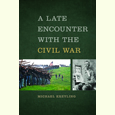The Persistence of Memory
John Boyne re-imagines the last days of the Romanovs
Perhaps best known for his 2006 New York Times bestseller for young adults, The Boy in the Striped Pajamas, Irish author John Boyne is a master of gripping, page-turning historical fiction. In his latest U.S. release, The House of Special Purpose, Boyne re-imagines the Russian Revolution of 1917 and the bloody end of the Romanov dynasty. He tells this tale of love, regret, and nearly unbearable loss through the eyes of two young lovers whose unlikely bond leads to surprising consequences.
 The story begins in 1981 as eighty-two-year-old Georgy Daniilovich Jachmenev tells the story of his life. The novel unfolds in chapters that alternate between two narrative threads: one storyline proceeds forward in time from childhood to the day in 1918 when Georgy left Russia behind forever, and the second moves backward from the present, as he describes his life in London with his beloved wife, Zoya, their daughter, Arina, and grandson, Michael. The two stories meet in the climactic events surrounding the demise of the Romanov family, the violent end of their centuries-old dynasty, and Georgy’s unique perspective on the tragedy.
The story begins in 1981 as eighty-two-year-old Georgy Daniilovich Jachmenev tells the story of his life. The novel unfolds in chapters that alternate between two narrative threads: one storyline proceeds forward in time from childhood to the day in 1918 when Georgy left Russia behind forever, and the second moves backward from the present, as he describes his life in London with his beloved wife, Zoya, their daughter, Arina, and grandson, Michael. The two stories meet in the climactic events surrounding the demise of the Romanov family, the violent end of their centuries-old dynasty, and Georgy’s unique perspective on the tragedy.
When young Georgy impulsively steps in front of a bullet meant for the Tsar’s cousin, the teenager is rewarded by being whisked from his miserable existence in the squalid village of Kashin to the glorious Winter Palace of Tsar Nicholas II in St. Petersburg, where he is to serve as companion and bodyguard to the Tsar’s only son, eleven-year-old Alexei Nicolaievich, the Heir, Tsarevich, and Grand Duke of the House of Romanov. It’s a difficult time for Tsar Nicholas, who is fighting battles of foreign aggression and domestic unrest on multiple fronts. He is also troubled by the unhealthy influence over his wife, Tsaritsa Alexandra, exerted by a dubious cleric called Father Gregory by his followers but known by many more as Rasputin, the libertine and power-hungry “Mad Monk.” The Tsaritsa depends on Rasputin’s “healing powers” to care for the Tsarevich, who suffers from hemophilia. As Georgy works hard to get his bearings within the palace—to learn his duties, practice the complicated protocol required in the presence of the royal family, and grasp the political powers at play in the palace and beyond—his situation is made more difficult by his instant and forbidden attraction to the Tsar’s youngest daughter, the Grand Duchess Anastasia.
 One night in St. Petersburg, Georgy and Anastasia disguise themselves and sneak out of the palace together to experience the unusual “White Night”—a natural phenomenon during which the sky appears as bright as day in the middle of the night. They pass the Palace Bridge, designed to stretch across the Neva River but unfinished during wartime. As Georgy observes, “Enormous brick and steelwork supports stood in place on either side of the Neva, but there was no sign that the two would ever meet; instead they stretched out toward each other, like a pair of lovers separated by a great expanse of water.” Georgy and Anastasia are separated by circumstances of birth, but their mutual desire grows ever more passionate and dangerous. Unfortunately, their relationship does not escape the observant gaze of Rasputin, who turns such information to his own nefarious ends. As events in Russia worsen and Anastasia and her family become pawns in the hands of the Bolsheviks, Georgy struggles to continue his mission as their loyal servant and protector.
One night in St. Petersburg, Georgy and Anastasia disguise themselves and sneak out of the palace together to experience the unusual “White Night”—a natural phenomenon during which the sky appears as bright as day in the middle of the night. They pass the Palace Bridge, designed to stretch across the Neva River but unfinished during wartime. As Georgy observes, “Enormous brick and steelwork supports stood in place on either side of the Neva, but there was no sign that the two would ever meet; instead they stretched out toward each other, like a pair of lovers separated by a great expanse of water.” Georgy and Anastasia are separated by circumstances of birth, but their mutual desire grows ever more passionate and dangerous. Unfortunately, their relationship does not escape the observant gaze of Rasputin, who turns such information to his own nefarious ends. As events in Russia worsen and Anastasia and her family become pawns in the hands of the Bolsheviks, Georgy struggles to continue his mission as their loyal servant and protector.
Decades later, living a quiet life in London, Georgy and Zoya are haunted by their memories of the people they left behind. As Zoya lies dying of ovarian cancer, Georgy reflects on their life together. Although their marriage has been characterized by deep devotion, it has also been subject to family tragedy, depression, infidelity, cultural alienation, and profound grief. Georgy thinks about the early years with his parents and sisters and wishes he knew what happened to them after he left the village: “There are great stretches of my life that are a mystery to me,” he explains. “Decades of work and family, struggle, betrayal, loss, and disappointment that have blended together and are almost impossible to separate, but moments from those years, those early years, linger and resonate in my memory. And if they remain as shadows along the dark corridors of my aging mind, then they are all the more vivid for the fact that they can never be forgotten.”
Readers who enjoy historical fiction will find much to like in Boyne’s creative retelling of this familiar story, as he brings it to life through the eyes of an ordinary young man caught up in extraordinary events beyond his control—events that will change the world forever.
John Boyne will discuss The House of Special Purpose at Parnassus Books in Nashville on April 24 at 6:30 p.m.


